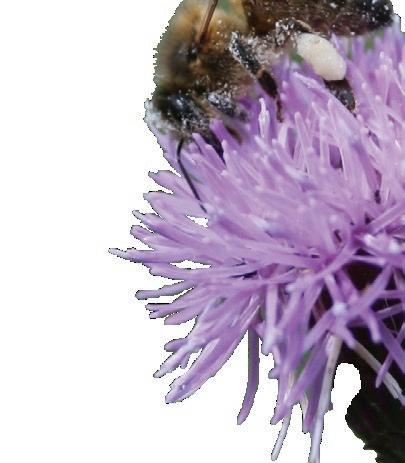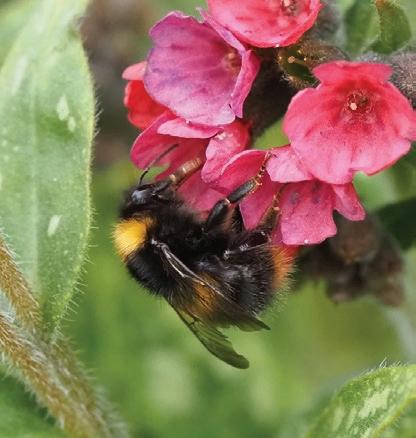
6 minute read
Objective 04 All-Ireland Honeybee Strategy
OBJECTIVE 04
All-Ireland Honeybee Strategy
Advertisement
Targets for 2021–2025:
TARGET 4.1 Education and Knowledge Transfer
TARGET 4.2 Communication
TARGET 4.3 Surveillance and Biosecurity
TARGET 4.4 Conservation of the native honeybee strain, Apis mellifera mellifera

TARGET 4.5 Data Sharing
TARGET 4.6 Tracking progress
The All-Ireland Honeybee Strategy 2021–2025 is a standalone strategy but also slots into the AIPP as objective 4. Annual reporting on the strategy occurs within the broader AIPP framework. However, oversight is provided by the Honeybee Strategy Steering Group, which is distinct from the AIPP Steering Group.
The Honeybee Strategy is intended to be considered in the context of the All-Ireland Pollinator Plan. Honeybees are different to other pollinators in the Plan. They are predominantly farmed, represented by beekeeping organisations and overseen by legislation enacted by DAERA and DAFM. The aim is not therefore conservation of honeybees per se, aside from the Irish black bee, nor economic development of the sector, although arguments could be made for an Irish honey and bee products marketing strategy. Rather, the overarching aims of this strategy are:
M Honeybees as part of a cohesive pollinator message.
M Healthy honeybees, healthy pollinators.
All-Ireland Honeybee Strategy Steering Group
Member Affiliation
Archie Murchie (Chair) AFBI (deputy Ivan Forsythe)
Susie Hill UBKA
Mary Montaut FIBKA
Lyndon Wortley INIB
Aoife Nic Giolla Coda NIHBS
Edward Hill IBA CLG
Thomas Williamson DAERA (chief bee inspector NI)
Mary Coffey DAFM
Úna FitzPatrick/Jane Stout All-Ireland Pollinator Plan Steering Group
Acronmyns
Acronyms Affiliation
AFBI Agri-Food and Biosciences Institute
BBKA British Beekeepers Association
DAERA Department of Agriculture, Environment and Rural Affairs
DAFM Department of Agriculture, Food & the Marine
FIBKA Federation of Irish Beekeepers' Associations
IBA CLG Irish Beekeepers' Association CLG
INIB Institute of Northern Ireland Beekeepers
NIHBS Native Irish Honey Bee Society
NUI Galway National University of Ireland, Galway
UFU Ulster Farmers’ Union
UKBA Ulster Beekeepers Association
Target 4.1
Education and Knowledge Transfer
4.1 Action
108 Conferences used as a means of disseminating good practice to beekeepers.
Progress measure
Conferences organised and used as a means of disseminating good practice UBKA, FIBKA, INIB, IBA CLG, NIHBS
Responsibility
109 Expand beekeeping qualification courses to cover other environmental issues, including impacts of beekeeping on native pollinators. Courses expanded and participants informed about other environmental issues Relevant fact sheets produced UBKA, FIBKA, INIB (via BBKA), IBA CLG
Target 4.2
Communication
4.2 Action
110 Establish a Steering Group to oversee the All-Ireland Honeybee Strategy 2021–2025.
Progress measure
Honeybee Strategy Steering Group established Twice-yearly meeting to discuss progress and share expertise Group to promote the Strategy. Honeybee Strategy Steering Group
111 Beekeeping associations to promote the aims of this strategy and the wider AllIreland Pollinator Plan to members. Strategy promoted via conferences Strategy promoted via roadshow and workshops Strategy promoted via teaching/mentoring activities Strategy promoted in Beekeeping publications and newsletters UBKA, FIBKA, INIB, IBA CLG, NIHBS
Responsibility
112 Honeybee Strategy Steering Group to provide evidence-based guidelines to stakeholders as necessary to ensure healthy honeybees and effective beekeeping.
113 Beekeeping associations to continue to promote and support the wider All-Ireland Pollinator Plan in public engagement activities. Agree communication strategy and provide evidence-based guidelines to relevant organisations as appropriate (e.g.
Farming Unions) Honeybee Strategy Steering Group
Associations to promote the AIPP as relevant UBKA, FIBKA, INIB, IBA CLG, NIHBS
Target 4.3
Surveillance and Biosecurity
4.3 Action
114 Prepare a paper to establish the need for Honeybee Inspectors in RoI.
Progress measure
Publication of a paper establishing the need and remit for seasonal bee inspectors to support beekeepers Honeybee Strategy Steering Group
Responsibility
115 DAERA to circulate the agreed NI Bee Health Contingency Plan and updated Strategy for the sustainability of the honeybee when completed.
116 DAERA and DAFM to coordinate surveillance and share information on bee health, invasive species, and plant health (where relevant to bee health, e.g. pathway analyses).
117 Voluntary registration to be encouraged in RoI prior to new EU legislation, which may make registration compulsory.
118 Voluntary registration to be encouraged in NI through the ‘Databees’ platform. Plan circulated
North-South meetings to maximise cooperation DAERA
DAFM, DAERA
Organisations to actively encourage members to register FIBKA, IBA CLG, NIHBS, DAFM
Organisations to actively encourage members to register UBKA, INIB, NIHBS, DAERA
119 Data on overwintering losses and disease prevalence from the COLOSS survey to be shared at an island-wide scale. Information shared across the island Disseminated by beekeeping organisations
120 Honeybee Strategy Steering Group to bring associations together to discuss and agree a common policy on importations. Clarify current rules and regulations Agree principles to be published and promoted by
Beekeeping Associations Honeybee Strategy Steering Group, DAERA, DAFM
AFBI, DAFM
4.3 Action
121 Complete and publish allIreland pest risk assessments for invasive pests and pathogens of honeybees.
122 Investigate the feasibility of a unified approach to managing Foulbrood on the island of Ireland.
Progress measure
Disseminate DAERA Asian Hornet contingency plan Publish All-Ireland risk assessments for invasive pests and existing pathogens Publish All-Ireland risk assessments for unknown but emerging pests and pathogen AFBI, DAFM, DAERA NIEA (invasive species)
Clarify statutory rules North and South Recognition of the diseases’ importance and management options explained Honeybee Strategy Steering Group to agree principles Disease ID sheets made available for both forms of
Foulbrood Education events to focus on foulbrood Association questionnaire for options re foulbrood (South) AFBI, DAFM, DAERA
Responsibility
Target 4.4
Research has shown that Ireland has a pure population of Apis mellifera mellifera, the native Irish black bee. Elsewhere in Northern Europe, the original home of Apis mellifera mellifera, it has been severely hybridized. Ireland has a duty to conserve this genetic resource.
4.4 Action
123 NIHBS to continue to promote the conservation of the native Irish Black Bee.
Progress measure
Continued activities of the NIHBS
124 Beekeeping sector to encourage an education process on the merits of the subspecies/strains of honeybee including the Irish Black Bee.
125 Publication of an agreed management strategy for Apis mellifera mellifera on the island of Ireland. This to include identification of subspecies, issues of local provenance and climatic suitability across the island of
Ireland The Irish strain of Apis mellifera mellifera encouraged where appropriate
Publication of the strategy. To include development of a roadmap towards the island of Ireland being recognised as a
‘stronghold’ for Apis mellifera mellifera NIHBS, NUI Galway
Responsibility
NIHBS
FIBKA, UBKA, INIB, IBA CLG, DAFM, DAERA
Target 4.5
Data sharing
4.5 Action
126 DAFM and AFBI to make results of pesticide surveys publicly available.
Progress measure
Results of pesticide surveys made available in RoI Results of pesticide surveys made available in NI
127 Promote BeeConnected in NI as a mechanism to connect beekeepers and farmers so that beekeepers can be kept informed about spraying events in their vicinity. Beekeeping Associations to encourage members to register BeeConnected promoted to farmers by the Ulster Farmers
Union UBKA, INIB, UFU, NIHBS
128 Investigate possible mechanisms linking farmers and beekeepers so that they can be notified of spraying events in RoI. Possible mechanisms identified
129 Honeybee Strategy Steering Group to develop a roadmap towards a system to capture hive density per hectad (10km2). Road map developed to: ç better balance managed and wild pollinator populations across the island ç enable implementation of alerts and action plans against new pests/pathogens ç avoid selling non-native honeybees into Voluntary
Conservation Areas. Explore the possibility of testing in one specific region (e.g.
Enniskillen)
Responsibility
AFBI, DAFM
Honeybee Strategy Steering Group
Honeybee Strategy Steering Group, UBKA
Target 4.6
Data sharing
4.6 Action
130 Publish an annual review of the All-Ireland Honeybee Strategy 2021–2025.
Progress measure
Annual review published outlining progress against each of the actions Annual reviews made available via beekeeping organisation websites. Honeybee Strategy Steering Group










